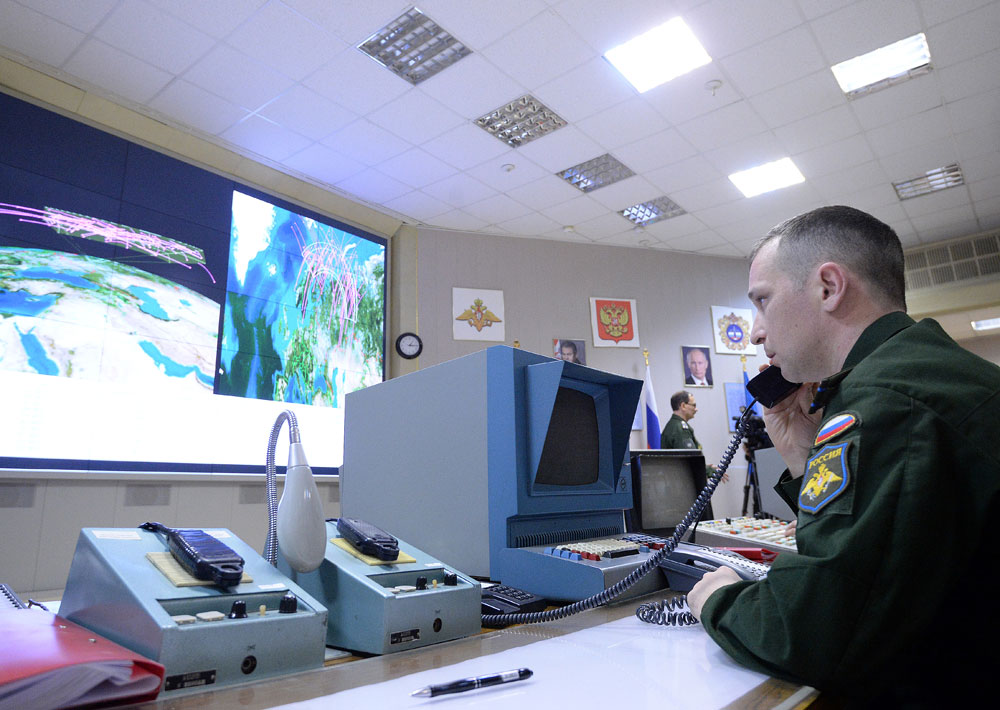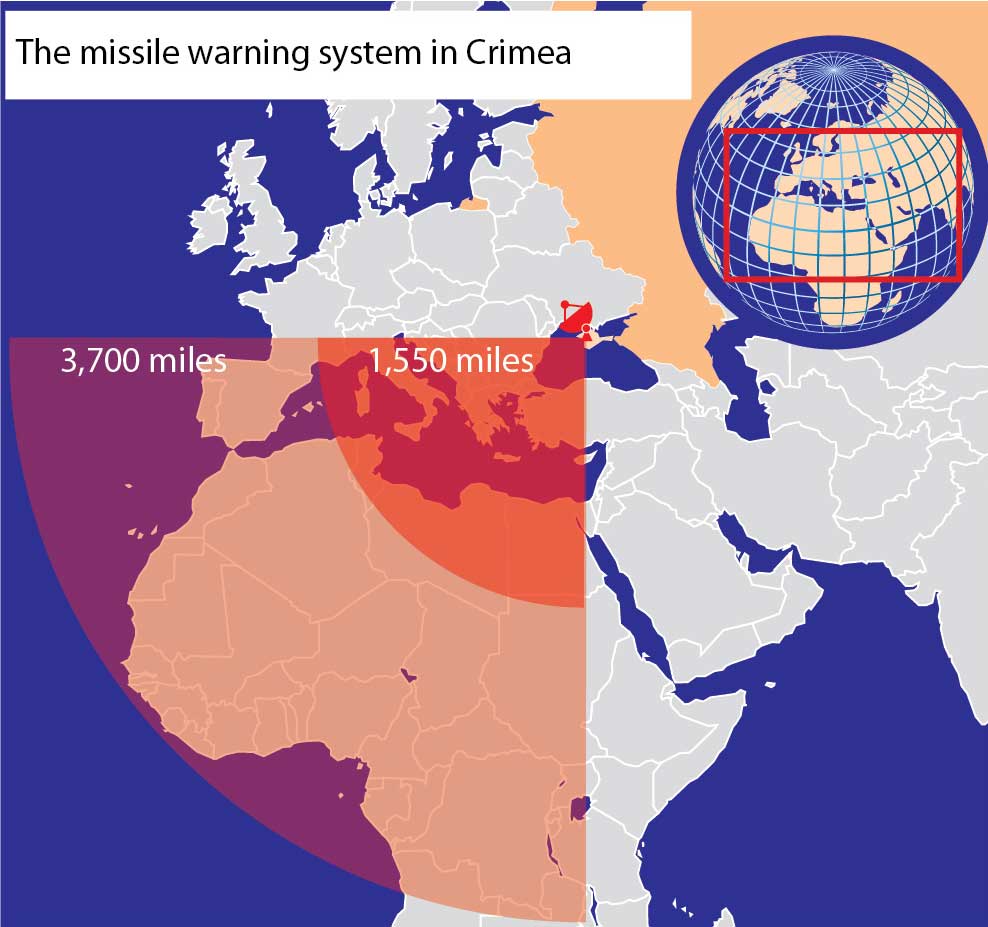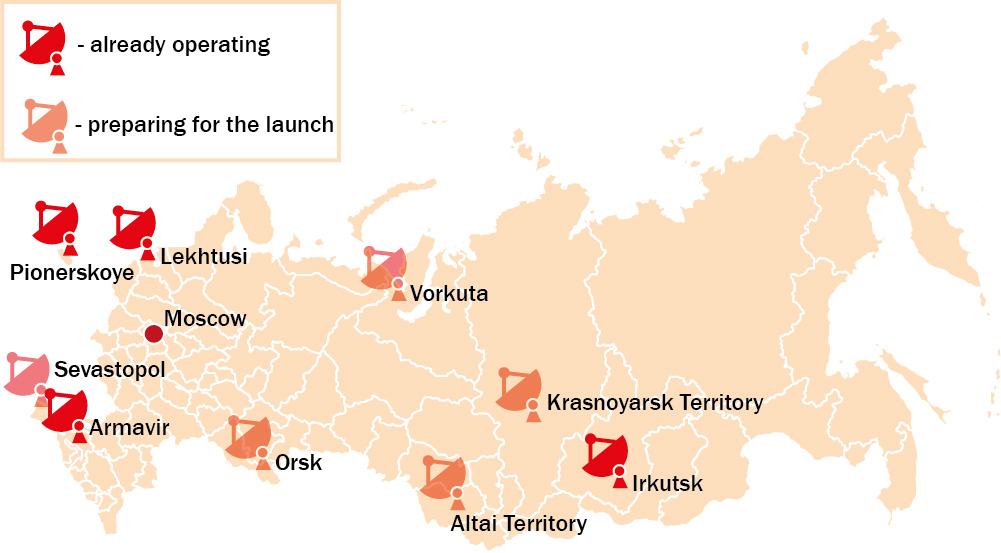
An officer inside the command center of the Don-2-N multirole radar near the town of Sofrino in the Moscow Region.
Kirill Kallinikov / RIA NovostiThe Russian Defense Ministry is to restore a radar station in Crimea that detects missiles launched from the Black and Mediterranean seas, reports the Izvestiya daily newspaper.
The radar station for Russia's missile warning system (MWS) on the peninsula will be capable of identifying the launch of ballistic, winged and supersonic warheads. The new MWS element will increase Russia's defense capacity south and southwest of the country.
"In the last years NATO has increased the activity of its ships in the Mediterranean and Black seas and deployed an additional navy unit to the naval base in Rota, Spain,” explained editor-in-chief of the Arsenal Otechestva (Arsenal of the Fatherland) magazine Viktor Murakhovsky.
“The base not only has anti-missile systems but also cruise missiles that can be used against Russia. Moscow must react to such things," he said.
In his words, in 2013 Russia registered the firing of middle and long-range missile targets by Israel as part of a test of the country's air defense system.
"From a military-technical point of view, it is clear that it is easy to place a warhead on such objects and from a ‘target’ the missile turns into a real weapon," added Murakhovsky.
He believes that Moscow's main concerns arise from the United States’ deployment of a European anti-missile system on Romanian territory.
"The new base is supplied with the Aegis Ashore System with the MK-41 universal ship firing systems that can be used for launching missiles. Moscow cannot determine what the MK-41s are equipped with: the SM-3 air defense missile or the Tomahawk winged missiles," said Murakhovsky.
According to an expert in Russia's defense industry, the government is currently discussing a future missile warning system.
"Now there is the issue of either destroying everything and starting from scratch or transferring a part of the MWS near Irkutsk [3,200 miles east of Moscow – RBTH] and rebuilding the station," explained the expert, speaking on condition of anonymity.
 Source: Nikolai Korolev
Source: Nikolai Korolev
In his view, in the first case the detection distance of the target can reach 6,000 kilometers (3,700 miles), in the second – up to 2,500 kilometers.
"The equipment of the MWS near Irkutsk has aged but is still capable of carrying out necessary objectives, that is, following missiles launched in the Black and Mediterranean seas. Both possibilities are acceptable," he said.
He also noted that currently negotiations are being held between the producer and the Defense Ministry, after which the government will officially announce the project's launch. The cost of the new station is estimated between 1.5 and 2 billion rubles ($23-31 million – RBTH).
"The new MWS stations are easily scalable. You can expand the antennae field and direct it at areas from which, according to the government, there can be a security threat," added the expert.
Since 2000 Russia has been modernizing its missile warning systems. In order to guarantee security for its borders, Moscow needs to replace its old Soviet stations, as well as the ones lost in the Baltic states, Ukraine and Belarus after the fall of the USSR.
 Source: Nikolai Korolev
Source: Nikolai Korolev
In 2008 a new MWS was deployed in the settlement of Lekhtusi near St. Petersburg. It is of the Voronezh type, capable of detecting all air and space objects from the coasts of Morocco to Spitsbergen, an island in the Svalbard archipelago in the Arctic Ocean.
The second station was launched in 2009 in Armavir in the Krasnodar Territory (870 miles south of Moscow). This unit is responsible for monitoring the area from North Africa to India.
Equivalent MWSs are also deployed in the in the Pionersk settlement of the Kaliningrad Region (800 miles west of Moscow) and near Irkutsk. The first follows missile activity in the "western" areas, the second – in the area from China to America's west coast.
The Russian Defense Ministry has plans to build other stations in the Krasnoyarsk Territory (2,600 miles east of Moscow), in the Altai Territory (2,400 miles east of Moscow), in Orsk (1,100 miles east of Moscow) and near Vorkuta (1,200 miles northeast of Moscow).
All rights reserved by Rossiyskaya Gazeta.
Subscribe
to our newsletter!
Get the week's best stories straight to your inbox